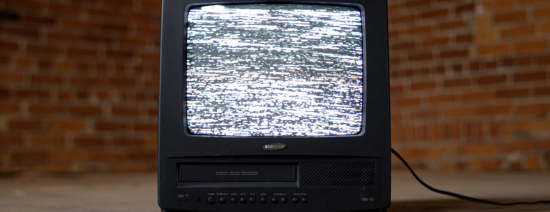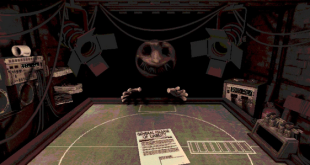Stories that scare us have always had wide appeal, from ancient folk tales that warned against grisly fates for those who dared break social norms, to Victorian ghost stories around the fire at Christmas. This tradition has mapped almost exactly onto the ways we consume content today: TV, video games and of course, blockbuster cinema.
It’s the local independents that have been the stronghold of the most pioneering horror stories. This year’s release of found footage film, Late Night With The Devil, has yet again brought audiences flocking to their nearest picture houses. Arriving on our screens 25 years after the release of The Blair Witch Project, it’s clear that found footage is as undead as ever.
Here, we look at what keeps drawing independent filmmakers back to found footage, and why the age-old narrative tool still offers endless possibilities for crafting fresh and gripping stories.
A Homage To Found Footage
Late Night With The Devil is the most recent exponent of the sub-genre. Evolving past a film within a film, it is more a film within a documentary about a 1970s talk show, whose host unwittingly unleashes a wave of evil after broadcasting a possession live on air. Setting the story years before the found footage format hit the mainstream, the film has a knowing edge, by drawing upon the many trademark features that this particular brand of horror has utilised in the 40 years since.
The Australian indie is available to watch in late April with a release limited to certain locations. However, streaming this film (and diving into the wider found footage catalogue) is possible from anywhere in the world by downloading a VPN Chrome can then run as a plug-in.
In broader terms, installing a VPN permits the user to run a private browser, allowing them to surf the internet from almost any location around the world. In the case of Late Night With The Devil, hooking up to an Australian server will grant anyone access to the local streaming platforms first showing the film.
How We Got Here
The Blair Witch Project might be considered the origin of the found footage film, but found footage stories date back well before the advent of cinema. Horror fiction writers have used stories that come to us through second- or even third-hand accounts since the dawn of the genre itself, with Mary Shelley’s Frankenstein bringing it into the mainstream.
We all know that Frankenstein is not the name of the monster, but the scientist who brought it to life. But many forget that the story comes to us through the letters of Captain Walton, a polar explorer who discovers the emaciated Dr. Frankenstein drifting on the ice, in pursuit of his creature to the ends of the earth.
Another story within a story surfaces when we hear from Dr. Frankenstein the narrative of his creature, recounted in first person through the eyes of the monster itself.
“I’ve uncovered this horrifying story and it must be told” is a framing device that was hugely popular in the 19th Century, for the same reasons it grips audiences time and again today. Offering up a tale with no real-world context gives the story away as total fiction. Yet instead, packaging it into a found letter, a confidential report, or perhaps lost film footage gives the audience that spine-tingling feeling the story may really be happening somewhere out there…
Conclusion
Even the inkling that a story could be true is a thrill enough to keep coming back for more. Found footage has this same effect. From the Blair Witch Project to Late Night With The Devil, they only go to show how influential independents have been in repurposing and popularising storytelling devices in modern cinema, in much the same way Shelley’s Frankenstein did for literary horror 200 years ago.
Hopefully, the success of Last Night With The Devil will bring us even more evolutionary takes on the found footage format, a craze that is here to stay.
 Horror News | HNN Official Site | Horror Movies,Trailers, Reviews
Horror News | HNN Official Site | Horror Movies,Trailers, Reviews






